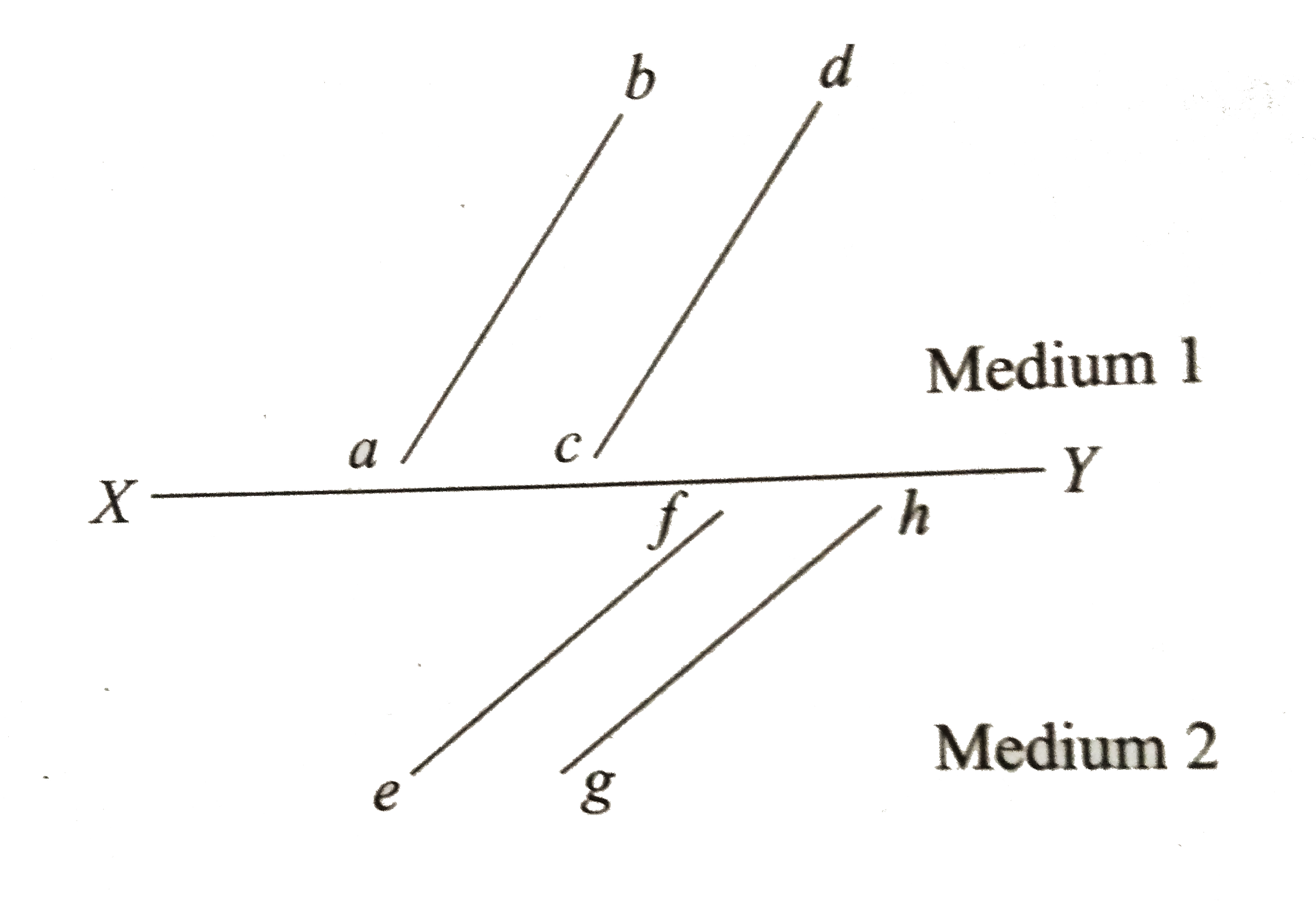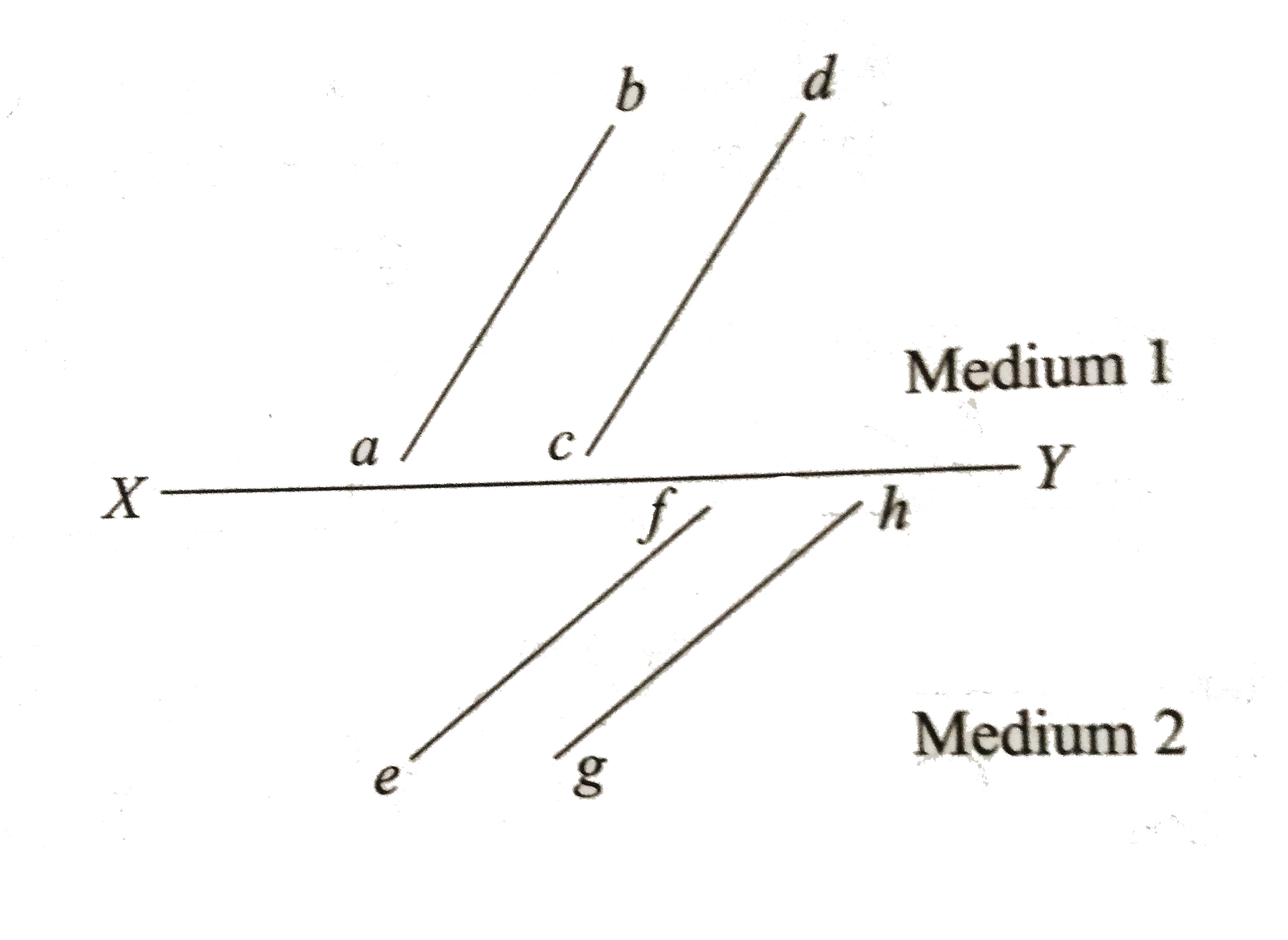Fig. shows a surface XY separating two transparent media, medium 1 and medium 2. Lines ab and cd represent wavefronts of a light wave travelling in medium 1 and incident on XY. Line ef and gh represent wavefront of the light wave in medium 2 after rafraciton.

Light travel as a
parallel beam in each medium
convergent beam in each medium
divergent beam in each medium
divergent beam in one medium and convergent beam in the other medium
The correct Answer is:a
Wavefronts are parallel in both media. Therefore, light which is perpendicular to the wavefront travels as a parallel beam in each medium.
Topper's Solved these Questions
- BOOK - CENGAGE PHYSICS ENGLISHCHAPTER - WAVE OPTICSEXERCISE - Matching Column Type2videos
WAVE OPTICS
- BOOK - CENGAGE PHYSICS ENGLISHCHAPTER - WAVE OPTICSEXERCISE - Comprehension Type14videos
WAVE OPTICS
- BOOK - CENGAGE PHYSICS ENGLISHCHAPTER - WAVE OPTICSEXERCISE - MCQ2videos
WAVE OPTICS
- BOOK - CENGAGE PHYSICS ENGLISHCHAPTER - SOURCES OF MAGNETIC FIELDEXERCISE - single correct Ansewer type12videos
SOURCES OF MAGNETIC FIELD
Similar Questions
Fig. shows a surface XY separating two transparent media, medium 1 and medium 2. Lines ab and cd represent wavefronts of a light wave travelling in medium 1 and incident on XY. Line ef and gh represent wavefront of the light wave in medium 2 after rafraciton. Speed of light is
 View Solution
View SolutionFig. shows a surface XY separating two transparent media, medium 1 and medium 2. Lines ab and cd represent wavefronts of a light wave travelling in medium 1 and incident on XY. Line ef and gh represent wavefront of the light wave in medium 2 after rafraciton.

The phase of the ligth wave at c, d, e, and f are ϕc, phi_(d), ϕe and ϕf, respectively. It is given that ϕc≠ϕf. ThenView SolutionLight waves travels in vacuum along the X-axis. Which of the following may represent the wavefronts?
View SolutionThe critical angle between a certain transparent medium and air is ϕ. A ray of light travelling through air enters the medium at an angle of incidence equal to its Brewster angle θ. Therefore, the angle of refraction is
View SolutionThe critical angle between a certain transparent medium and air is ϕ. A ray of light travelling through air enters the medium at an angle of incidence equal to its Brewster angle θ. Therefore, the angle of refraction is
View SolutionYellow light with wavefront 0.5μm is air surface refraction in a medium in which velocity of light is 2×10−8m/s. Then the wavelength of the light in the medium would be .
View SolutionA light wave of frequency 5×1014Hz enters a medium of refractive index 1.5. In the velocity of the light wave is ….. And its wavelength is ……
View SolutionA spherical surface of radius 30 cm separates two transparent media A and B with refractive indices 1'33 and 1.48 respectively. The medium A is on the convex side of the surface. Where should a point object be placed in medium A so that the paraxial rays become parallel after refraction at the surface ?
View SolutionIf light travels a distance x in t1 sec in air and 10x distance in t2 sec in a medium, the critical angle of the medium will be
View SolutionThe critical angle for a given transparent medium and air is ic. A ray of light travelling in air is incident on this transparent medium at an angle of incidence equal to the polarising angle ip, What is the relation between the two angles ic and ip ?
View Solution

